Prospect Avenue is the spine of Windsor Terrace, running from 3rd and Hamilton Avenues southeast and south to Ocean Parkway. It’s named for nearby Prospect Park and its high hills (left by a receding glacier at the end of the last ice age), though Brooklyn’s highest point is actually in Green-Wood Cemetery. As a neighborhood, Windsor Terrace occupies a narrow band between the cemetery, which was surveyed in the 1830s and opened in 1838, and Prospect Park, which was conceived by President of the Brooklyn Board of Park Commissioners James Stranahan, designed by Central Park landscape architects Frederick Law Olmsted and Calvert Vaux and opened in 1867.
(The other spine of Windsor Terrace is the Prospect Expressway, connecting the Brooklyn-Queens Expressway and Ocean Parkway, built by traffic czar Robert Moses in the 1950s, though I tend to gloss over it.)
Windsor is the family name of the British Crown and reflects a tendency of real estate developers to “class up” buildings and neighborhoods by giving them British names: hence, nearby Kensington and its Albemarle, Beverly, Westminster, etc. Roads.
On the way to visit friends in Kensington in early September 2018, I ambled down Prospect Avenue and a couple other streets in Windsor Terrace. There are some notable structures to be found…
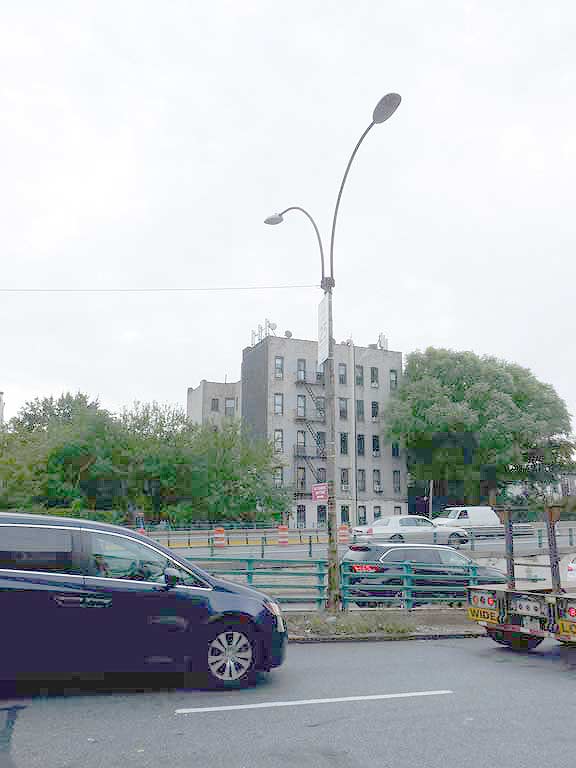
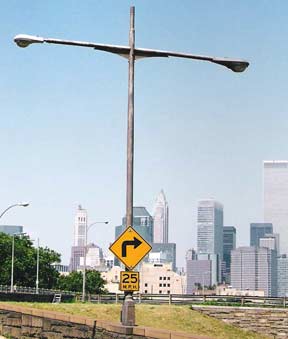 The first thing I noticed? What else? On an expressway exit ramp between 3rd and 4th Avenues is one of the Expressway’s last Whitestone-type lampposts (officially Type 41), which once dominated both the Prospect and the BQE. They were T-shaped, with a finned mast. Only a few intact specimens remain at the Manhattan and Brooklyn ends of the Brooklyn Bridge, and a lone complete post, complete with mast, at 3rd Avenue and 17th Street a few blocks away. This one had Cobra masts installed decades ago, and recently got a set of Light Emitting Diode lamps.
The first thing I noticed? What else? On an expressway exit ramp between 3rd and 4th Avenues is one of the Expressway’s last Whitestone-type lampposts (officially Type 41), which once dominated both the Prospect and the BQE. They were T-shaped, with a finned mast. Only a few intact specimens remain at the Manhattan and Brooklyn ends of the Brooklyn Bridge, and a lone complete post, complete with mast, at 3rd Avenue and 17th Street a few blocks away. This one had Cobra masts installed decades ago, and recently got a set of Light Emitting Diode lamps.
The Prospect is your not-so-friendly neighborhood expressway. The dwellings on the south side of Proepct Avenue fell to the wrecking ball, while these attached brick survivors cling together on the north side.
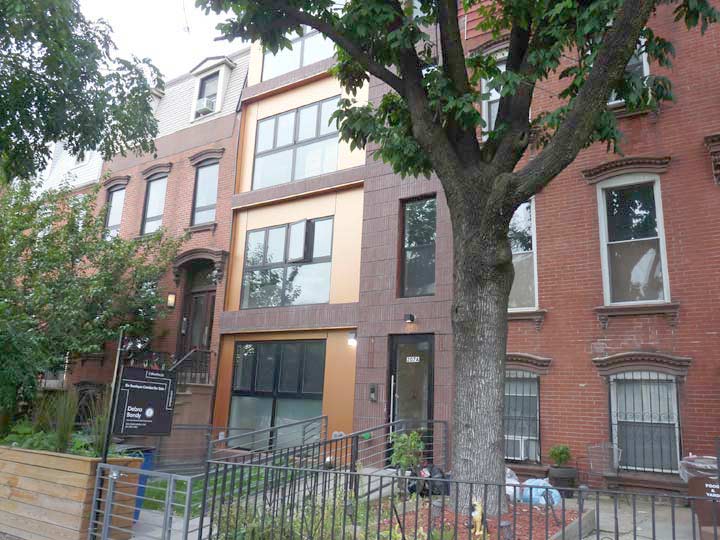
One of these is not like the other, as 2018 esthetics intrude on those of the 1880s. This wing of Park Slope does not have the city’s Landmarks Preservation Commission protection.
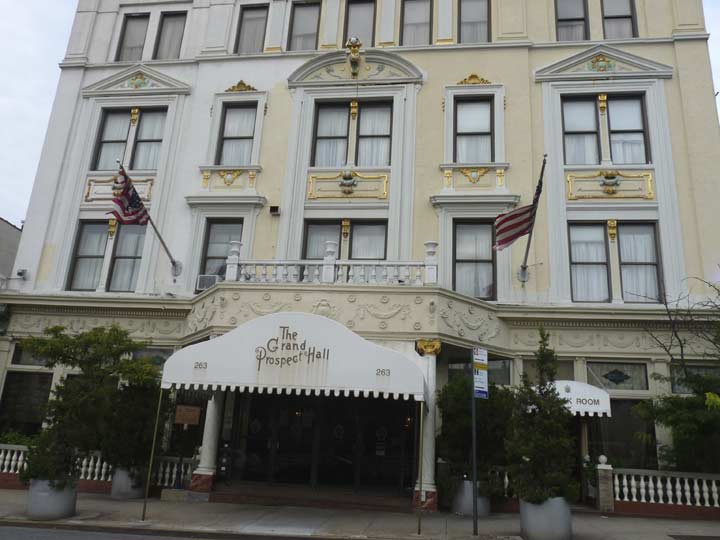
The French Renaissance Grand Prospect Hall, 263 Prospect Avenue just south of 5th, is familiar to NYC viewers from its ubiquitous commercials: “We make your dreams come true!” It was constructed as a grand banquet hall in 1892 by John Kolle, who hired Ulrich J. Huberty, the architect of Prospect Park’s Tennis House and Litchfield Villa. The interior is indeed ornate. William Jennings Bryan, Enrico Caruso, Lena Horne, Fred Astaire and Al Capone were all patrons; the Jack Nicholson vehicle Prizzi’s Honor was filmed here. The Hall has been under the ownership of Michael & Alice Halkias since 1982.
I’ve never been inside, but I was once invited to a wedding here–and the invitation was later rescinded, when the bride explained she had gone over budget and had to pare the guest list! As it happened I was in Park Slope the day of the wedding and went by Prospect Hall in a friend’s car and saw her in her gown outside the building! (The newlyweds, who moved to New Hampshire decades ago, later had me over for dinner as a consolation prize.)
Outdoor biergartens are getting to be a “thing”, and Prospect Hall’s Halkias family has joined the party with an outdoor entry next door to the main Hall during the warm months.
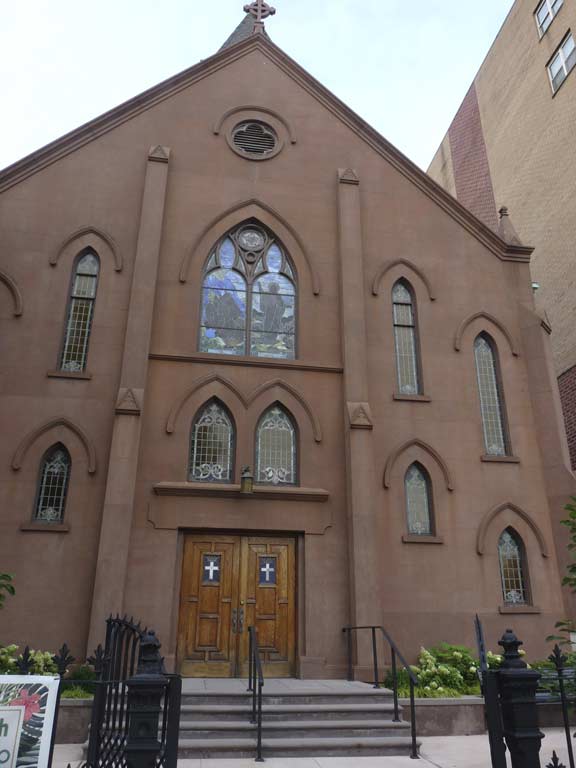
At 283 Prospect, the St. John-St. Matthew-Emaunuel Lutheran Church’s website is tight-lipped about the construction date of its church building (as many churches are, regardless of denomination — you’re supposed to care about worshiping, not architecture) but an outdoor poster says “since 1859” which sounds a bit early for this building, though you never know.

As Prospect Expressway veers away from Prospect Avenue, there’s room for a small park at 6th Avenue. The city has never vouchsafed it a name. In fact they’re resolute about it and installed a brown leaf Parks sign that simply says “Park.” So there!
There are a number of thin, vertical parks along the Expressway in Windsor Terrace, but they do have names such as Seeley Park and one named for local City Council President in the 50s and 60’s Thomas Cuite (pronounced “cute.”)
A number of short, one-block streets intersect Prospect Avenue. On the south side of Webster Place, there seems to be a little piece of San Francisco or Seattle here, with a grouping of beautifully painted, porched Queen Anne-style houses.
If you own or know the story behind one of these beautiful buildings, let me know. All are meticulously maintained, at least on the outside. Shouldn’t the Landmarks Preservation Commission take a look here?
Another is the more mundane Calder Place. I was hoping it was named for the King of Mobiles, Alexander Calder, but instead it honors another local Representative and Senator, William Musgrave Calder, who during his Senatorial term between 1917 and 1923 sponsored the first daylight-savings law.
Today Arrow is a laundering company, but I remember it as both a shirt company (my mother and grandmother worked for its parent company, Cluett-Peabody, in Troy, NY) and also as a New England-based company–I still have many Arrow street maps in my collection.

A group of colorful bay-windowed dwellings on the north side of Prospect Avenue between 6th and 7th Avenues.
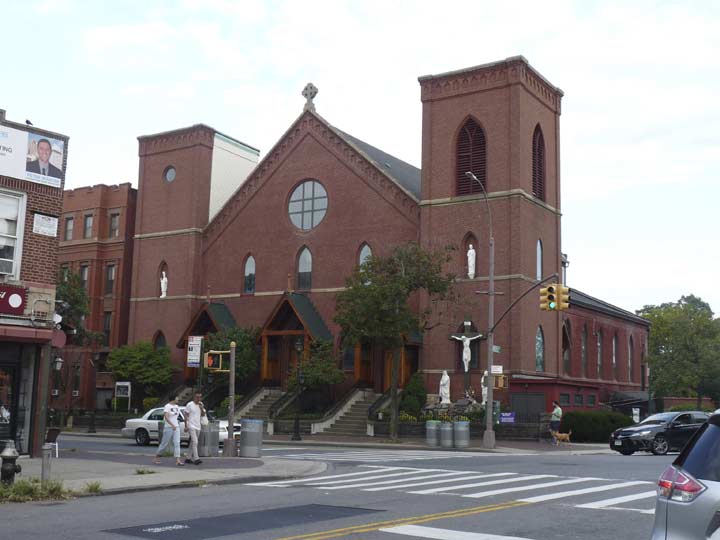
For many Windsor Terrace guys, Sundays mean Holy Name of Jesus Church at Prospect Park West and Prospect Avenue in the mornings, and Farrell’s in the afternoon. The Gothic Revival church, and the school behind it, are both massive; the church dates to 1878 and the school to 1923.
Eons, er, decades ago, I attended my cousin Jim’s first marriage here, in September 1978.
Because mid-19th century developers desired a Prospect Park association, Prospect Park West extends past the park to 20th Street, even though it doesn’t border the Park for a few blocks. It is where 9th Avenue would ordinarily be.
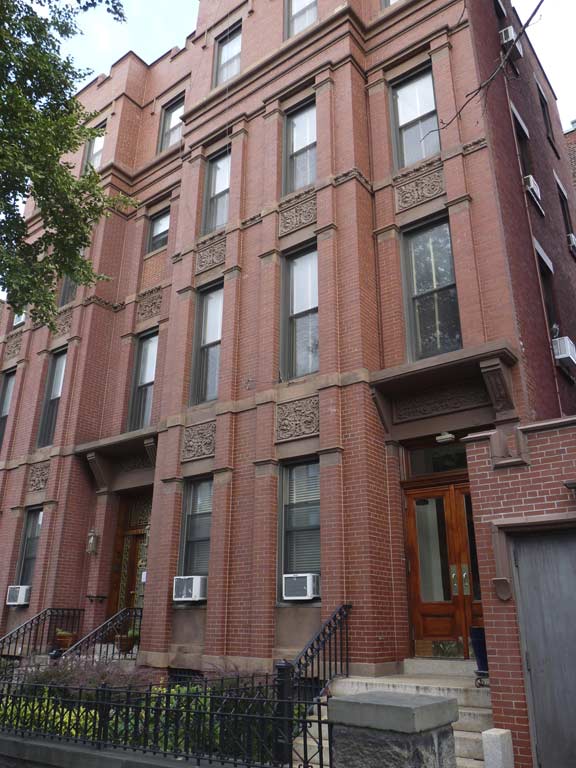
The rectory next to the church on PPW is something to behold, too.
Howard and Fuller Places are another pair of one-block streets intersecting Prospect Avenue, this time between PPW and 10th Avenue. The buildings on both streets are similar, indicating the same developer built both.
Fuller Place’s houses are pleasant attached brick buildings, most of which have outdoor porches. Some homeowners have decided to enclose the porches at some time in the past. Fuller Place was featured in the 1994 Geena Davis vehicle Angie, in which she plays a working class Brooklyn woman from Bensonhurst; her boyfriend in the film was a pre-Sopranos James Gandolfini.
Not to be outdone by Angie, the corner house on the south side of Howard facing Windsor Place was featured as the home of Helen Hunt’s waitress Carol in the 1997 movie As Good As It Gets, which did a lot better than Angie at the box office. Jack Nicholson starred as Melvin, an angry obsessive-compulsive writer who is humanized by Hunt and a gay artist neighbor, Simon, played by Greg Kinnear. Nicholson and Hunt received Academy Awards (Best Actor and Actress).
When I saw these two on opposite corners at 10th Avenue and Prospect, I thought there were dueling hardware stores in an age when such places were becoming increasingly extinct. Actually someone informed me they had the same owner.
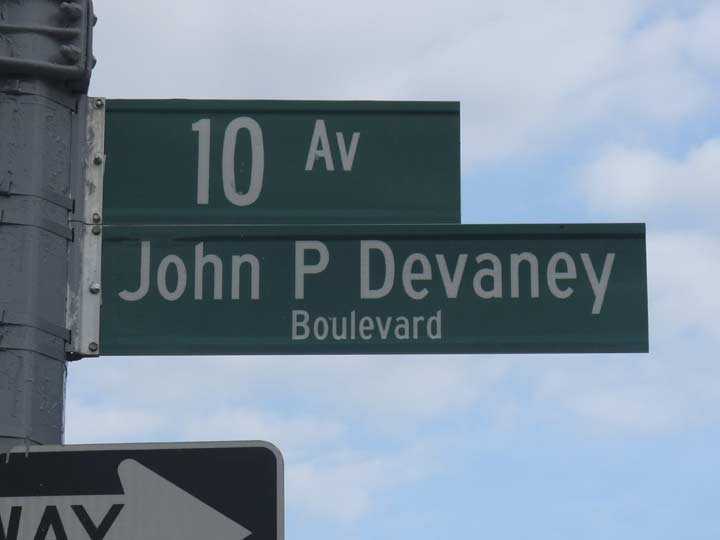
Not only is the Windsor Terrace stretch of 10th Avenue subnamed for fallen firefighter John P. Devaney, he also rates a Boulevard:
A ten-year Fire Department veteran searching a blazing Brooklyn apartment building yesterday became the first New York City firefighter killed in more than a year, the Fire Department said.
Firefighter John P. Devaney was looking for people trapped in the four-story building at 217 Van Brunt Street in the Red Hook section, when the room he was in suddenly ”flashed over,” everything combustible in it bursting into flames, Fire Commissioner Joseph F. Bruno said.
Mr. Devaney, 36 years old, was found unconscious by other firefighters, his body covered with third-degree burns, Commissioner Bruno said. Efforts to revive him failed, and he was pronounced dead at Long Island College Hospital at 5:15 A.M. [New York Times, 2/4/1989]
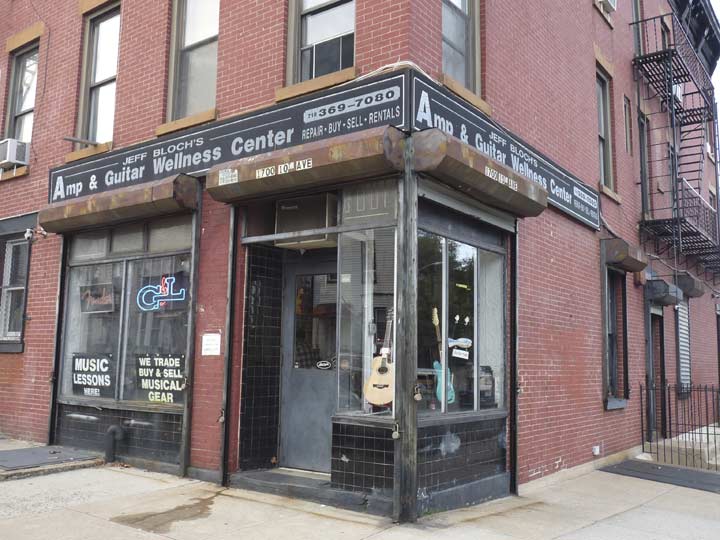
I noticed a number of intriguing storefronts such as Jeff Bloch’s Amp & Guitar Wellness center at 10th and 17th.
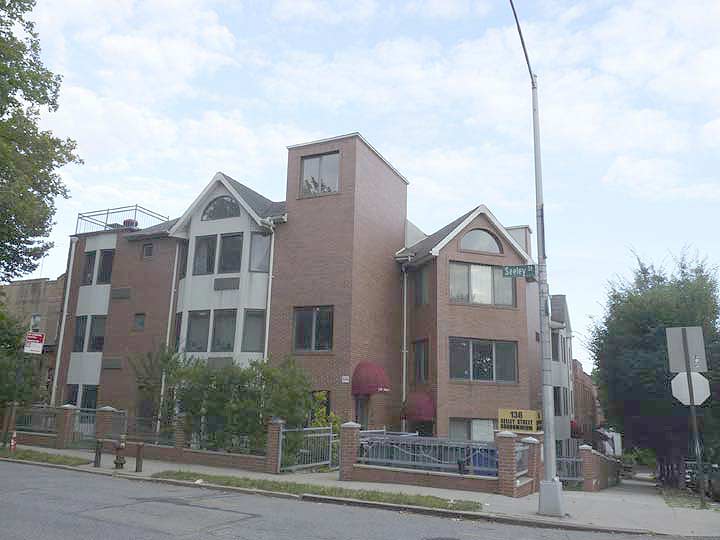
I detoured to 18th Street, which runs along the Prospect Expressway, for a couple of blocks. This dwelling at 18th and Seeley is reminiscent of Holy Name of Jesus Church (see above). Could there be a connection?
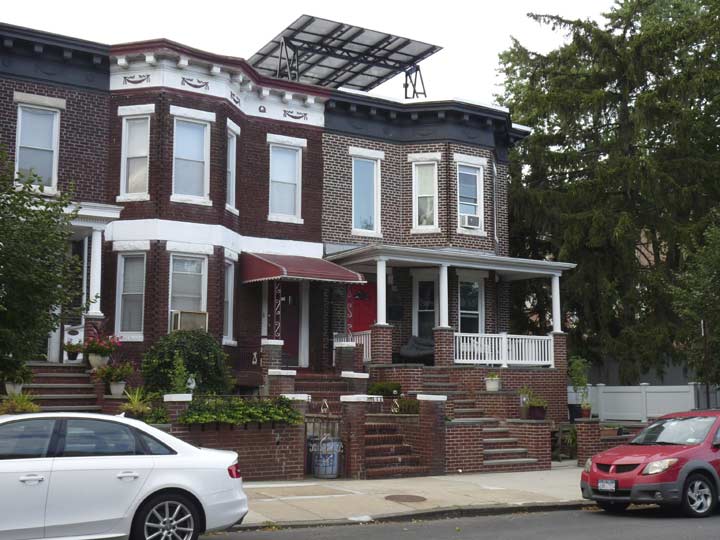
Two in a group of handsome attached brick houses with porches on Vanderbilt Street and Prospect Avenue.
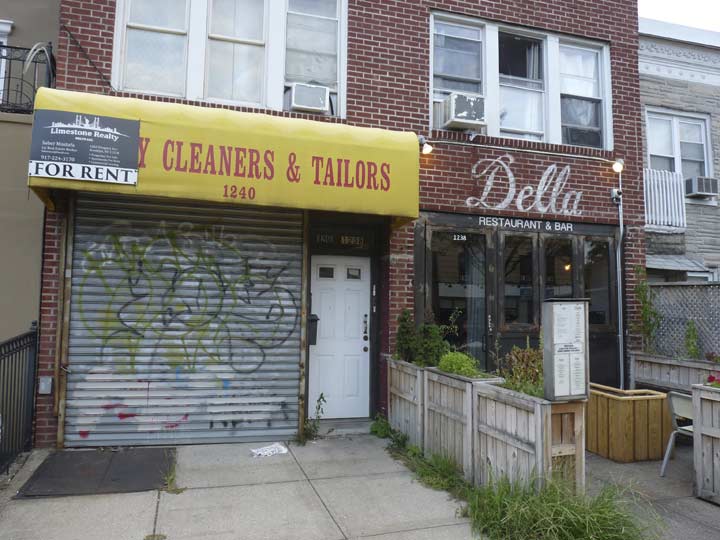
Della, an Italian restaurant on Prospect between Vanderbilt Street and Reeve Place, has a sidewalk sign with cursive letters painted directly onto the bricks.
More esoteric sidewalk signs on the southern stretch of Prospect Avenue in Windsor Terrace.
Greenwood Avenue, in the southern Terrace, contains many esoteric 19th century residences. Today, I only had time to peruse a couple of them near Prospect Avenue, including the rustic Episcopalian Church of the Holy Apostles, constructed in 1892. The church also features a vintage signboard with movable letters on a black background.
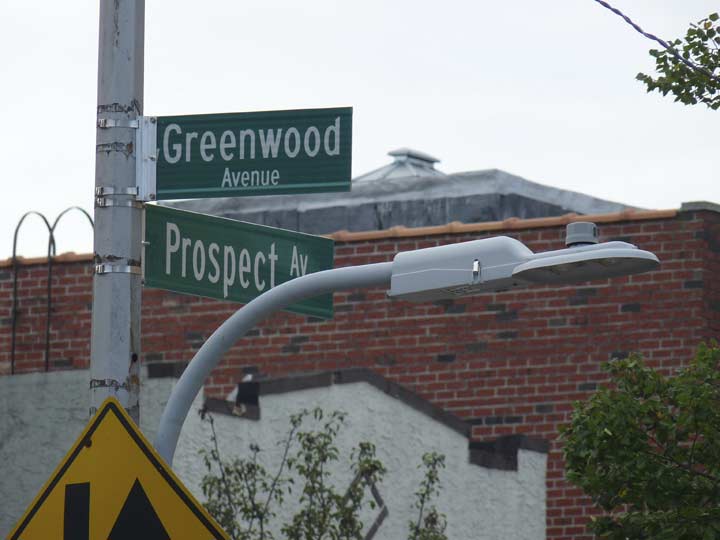
The subway exit at Prospect Avenue and Greenwood (for the Fort Hamilton Parkway station; F, G) give me a chance to get up close and personal with a Verdeon streetlamp, which has been standard issue in Brooklyn since LED lights were introduced beginning in 2014. Other makes dominate other boroughs, but the Verdeons rule Brooklyn. The Department of Transportation often adds extra streetlamps around subway exit/entrances.
Engine 240/Battalion 48 on Prospect Ave. south of Greenwood is one of Brooklyn’s and NYC’s more exotic firehouses, with a corner turret with intricately carved stonework. My friend Emily Nonko had the scoop about it in 1912:
Firehouse, Engine Company 28 (now Engine 228) was organized in 1890 in response to the growing population and number of buildings in the Sunset Park area of Brooklyn. First located in rented quarters at 945 4th Avenue, Engine Company 28 formally moved into their newly erected firehouse in December, 1891. The Brooklyn Fire Department was established as a paid department in 1869 until consolidation with the City of New York in 1898. Under the reorganization at that time this house was renamed number 128 and during a later reorganization it became Engine 228, which it has remained until today. This strong Romanesque Revival style building, with stone and brick facade, large, round-arched openings and decorative moldings, provides a distinctive presence on the busy streets of Sunset Park that began to be developed with commercial and residential buildings in the 1890s. The existence of this firehouse continues to provide a strong civic presence in this section of Brooklyn. [Brownstoner]
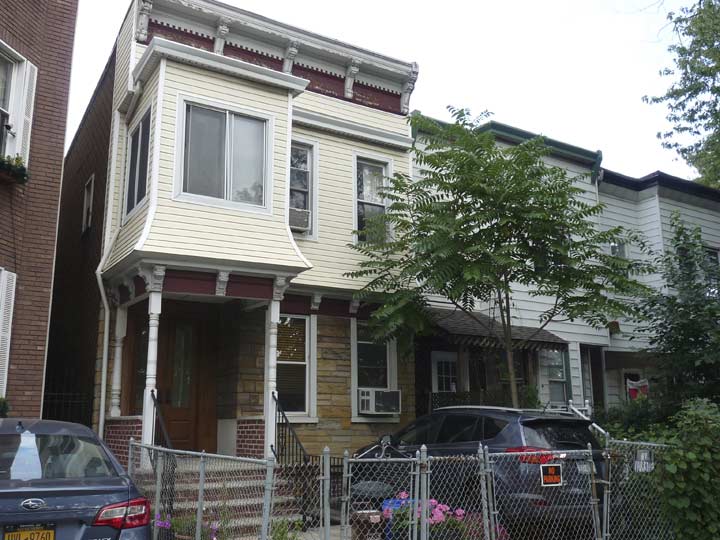
One of those late 19th century dwellings in the area I was referring to. This one is next door to the firehouse. It’s been resided over the years, but the original skeleton shows through.
Crossing the Prospect Expresway at Ocean Parkway over a pedestrian bridge, I wound up in Kensington, and passed the still-active Kensington Stables at East 8th Street and Caton Place. I got some photos, but I thought I would show some photos from a few years ago when some of the Dobbins were in the street ready for a Prospect Park outing.
Kensington Stables, at Caton Place and East Eighth Street, is the last stable remaining at an intersection that was once home to several such enterprises. In their heyday, at the beginning of the 20th century, hundreds of horses were stabled there. But the Depression and the automobile transformed horseback riding from a necessity into a hobby, one soon overtaken by other leisure activities.
No one remembers exactly when the changes started to take place — around the 1930’s or 40’s, old-timers suggest. The first stable to disappear was converted into a roller-skating rink, which later became a warehouse. The second was converted into a bowling alley, which later gave way to a giant church, the Calvary Cathedral of Praise. A third stable, known as the Little Gray Barn, was torn down [in 2003] and is being replaced by condominiums. [The now-defunct Village Voice]
Kensington is named for a western borough of London; there are many British-sounding place names in the area, mostly by design since in the mid-1800s, when the region was developed, a patina of sophistication was desired. There were scattered farms around until the 1850s when the Coney Island Plank Road (Coney Island Avenue) was built and some dwellings began to concentrate at Coney Island and Church Avenues, as well as the northern end of the area near Ft. Hamilton Parkway. As early as 1851, the street pattern began to appear.
Kensington’s borders are generally accepted to be Ft. Hamilton Parkway/Ocean Parkway/Caton Avenue on the north, 18th Avenue on the south, 36th Street and Dahill Road on the west and Coney Island Avenue on the east, though some demographers fudge a little, saying separate areas called Dahill (defined by a triangle formed from FHP, Dahill Road and 36th Street) and Albemarle (the northern extent from FHP south to Church Avenue) are subsections.
I like Kermit Place, which runs for two blocks between Ocean Parkway and Coney Island Avenue, for its narrowness, the handsome attached houses, and the odd little bend it takes near Coney Island Avenue.
It was named before the suicide of Theodore Roosevelt’s son Kermit in 1943, but perhaps it had been influenced by the renaming of Avenue Q for his brother, Quentin Roosevelt, who died on a flying mission in World War I. Maps show Kermit Place’s former name as Henry Street.
That’s the end of my peregrinations for the day, I was due at Marlborough Road for a gathering.
Please help contribute to a new Forgotten NY website
Check out the ForgottenBook, take a look at the gift shop, and as always, “comment…as you see fit.”
11/4/18


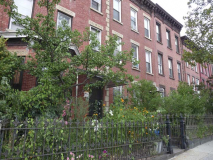
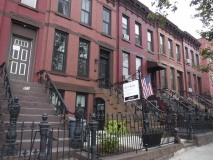
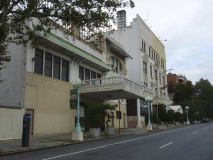
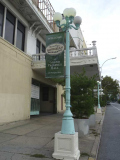
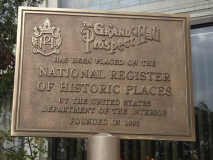
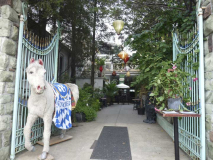

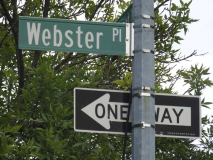
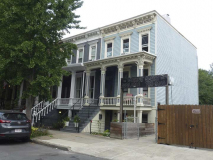
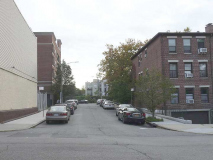
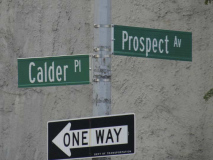
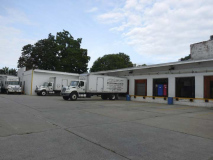
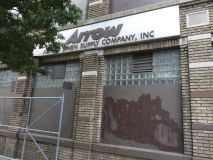

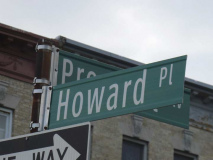
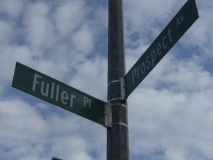
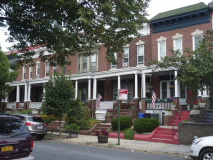
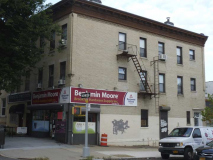
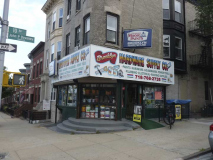
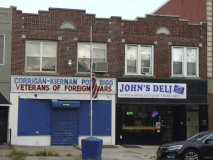
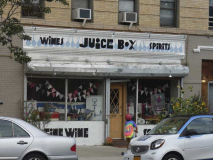
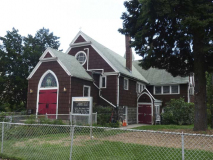
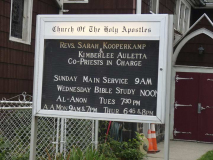
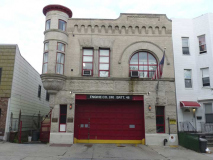
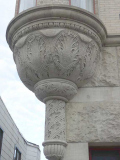
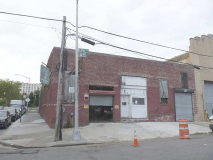
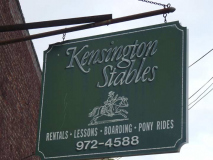
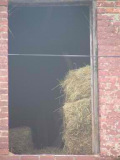
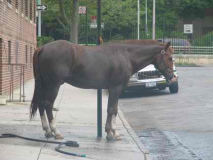
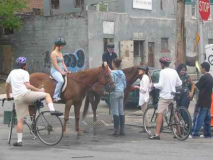
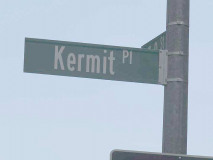
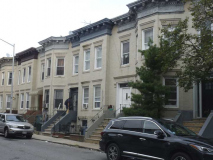
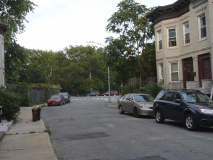
37 comments
Back in the late 1970’s, I lived at 1 Windsor Place, a block off Prospect Avenue at 7th Avenue. My roommate and I always said that we were on the border of “bad and not so bad” — but the view was awesome, as we could see the Statue of Liberty from our living room window.
I remember during the 1950’s there was still a dirt track on the east side of Ocean Parkway where people would ride their horses.
The fire companies near Prospect/Greenwoods Aves are Battalion 48 and Engine 240. My old office was in the liquor store shown, in 2004. We were involved with the City’s cancelled Seeley Street arch bridge repair over Prospect Ave.
noted
Kevin, in the infancy of organized basketball, the Grand Prospect Hall was a good place to catch a game
After Kermit Roosevelt shot himself on an Alaskan Army base the military authorities told his family that he had died of heart disease. Many years passed before they found out the truth. No doubt they had suspected it all along, as he had been struggling with alcohol and depression for years.
Kermit had accompanied his father on the nearly disastrous 1913 exploration of the previously unmapped river in the Amazon jungle now known as the Roosevelt River. Theodore Roosevelt saw the trip, which he co-commanded along with the famous Brazilian explorer Candido Rondon, as a way of reviving his spirits after the abject failure of his third party presidential campaign the previous year. Pretty much everything that could have gone wrong on the expedition went wrong. Most of the members suffered from various tropical illnesses, with Teddy himself sick the entire time and nearly dying, and were constantly on the verge of starvation.
The expedition’s physical toll was too much for Teddy Roosevelt. He never fully recovered, and died a doddering old man at age 60. Kermit seemed physically more or less intact, but something never fully explained happened to his mind. He got more and more depressed as the years went on, drank more and more, and 30 years later shot himself. Not that everyone on the expedition fared so poorly; Rondon rose to the highest rank in the Brazilian military, lived until his 90’s, and had a state named after him.
Tom Cuite was majority leader of the NY City Council up to the early 80’s . He lived on Fuller or Howard, I forget which.
You should make it a point to get into Grand Prospect Hall. Lots of rooms, old bowling alley, rathskeller, etc.
I grew up in Kensington in the ’50s and ’60s but we thought of it as Flatbush. I was on Webster Ave between East 8th Street and Ocean Parkway. The east side of Ocean Parkway had a bridle path going all the way to Brighton Beach. It was not uncommon to see people horseback riding along the Ocean Parkway bridle path. I think that was paved over in the mid-late ’60s.
28 FULLER PLACE
It’s nice to see that the Kensington Stables still exist to allow people to ride in Prospect Park on the bridle path…..I remember riding a few times using one of the 3 or 4 stables around there clumped together at that time in the 50’s…….I also remember the bridle path on Ocean Parkway allowing people to ride their mounts all the way to the Ocean Parkway station of the BMT Brighton line.where the path ended…….
Some Prospect Avenue landmarks I remember: Bohack’s at 11th Avenue. (now, after several generations of occupants and remodeling, Walgreen’s). The Pilgrim Laundry stood on the south side between 11th Ave. and Terrace Place; its smokestack was the tallest structure in the area. The north side between Terrace and 11th was, as I remember, mostly gas stations, now mostly “Fedders specials”. Another gas station stood at the southwest corner of Terrace Pl. (south of Terrace Place Prospect stands in for E. 6th St.) At the southwest corner of Vanderbilt Street was a large building which in my mom’s day was a movie theatre (the Venus, I believe). South of the theatre building is a row of 12 very narrow frame rowhouses, among the earliest attached homes in the area. (I’m told that row had been known locally as the “12 Apostles”) From Vanderbilt south to about the firehouse Prospect was an traditional “Main Street”, with a variety of businesses. On the west side was Garfinkel’s Luncheonette (now the veterinarian’s I think), an A & P supermarket, H. G. Yick’s Hand Laundry, and E. F. Higgins’ Funeral Home. On the east side you had Mr. Quartana’s drugstore on the northeast corner of Reeve Place, a butcher shop with sawdust on the floor, Von Seggern’s Delicatessen, Selinger’s (dry goods I believe), a bar, the VFW has been there forever, and another drugstore at the corner of Greenwood. The Expressway dealt a blow to the businesses, and many of the storefronts were converted to apartments.
Other notes: At least among the older generations of longtime residents, the “Avenue of the Americas rule” applied to Prospect Park West and it continued to be referred to as Ninth Avenue, even though the name was changed way back in 1895; likewise, Prospect Park Southwest (renamed in 1915) continued to be called Coney Island Avenue.
Another street named for a firefighter: Reeve Place was named for James F. Reeve, who was a charter member of the (volunteer) Windsor Hose Co. No. 3, and held the position of Foreman (Captain) for a time. In October 1896 Reeve died of consumption in his early 30s. At that time the City of Brooklyn was looking to eliminate duplication of street names in recently consolidated areas, and Reeve Place had been Adams Place while a part of Flatbush Township; it now was a duplicate of Adams Street in Downtown Brooklyn. The city had proposed Fredericka Street as the new name. Residents objected, with some proposing “Acme Place”, and others Reeve Place, with Reeve Place being adopted by City Council that December. It’s also notable that the Windsor Hose Co. No. 3 had its original house at 8 Reeve Place before moving to 1288 Prospect Avenue. (both former firehouses no longer standing) When the company was merged into the paid Brooklyn FD in 1896 it was then housed in the present structure.
It was the venuis movie theater.On prospect ave you had booders shoe store.It had shoes from floor to ceiling.
While you were in Kensington you were so close to Ditmas Park bordering Flatbush which has beautiful hidden gems and large Victorian homes. It remains a historic district until you hit Foster Avenue… the contrast is so striking between one side of the street to the other. This once was all Flatland that was designed and developed in a different style than the rest of NY. It’s worth taking a look, so beautiful and well kept.
Back in the 1950s when the Prospect Expressway was being built, the baby Jeff Wasserman would be brought by his mom to one of those sliver parks alongside of the new highway. We lived a few blocks away on 19th Street off of 5th Avenue. Perhaps we went to the park you photographed at Prospect and 6th. I recall looking down and watching the highway being built. Odd how some memories stick with a person.
A volume containing the proceedings of the Board of Estimate and Apportionment of the City of New York from 1915 reports the creation of Kermit Place, which appears to have already been privately graded and developed by property owners, and which would “serve to some extent as the easterly outlet for Henry Street”. A volume entitled “The City Record” from April 1922 reports that Henry Street’s name was changed to Kermit Place. The reasons for using “Kermit” are not given.
A volume containing the proceedings for The Board of Estimate & Apportionment for the City of New York from 1915 reports the creation of Kermit Place, which appears to have been privately graded and developed by property owners, and which would “serve to some extent as the easterly outlet for Henry Street”. The City Record from April 1922 reports that the name of Henry Street, which co-existed with Kermit Place, was itself changed to Kermit Place. But the reasons for using “Kermit” are not provided.
A great write-up of a great neighborhood. I grew up on Fuller Place and currently live on Prospect Avenue.
Re: Kermit Place. The Brooklyn Daily Eagle starts mentioning it in 1910, many years before Kermit Roosevelt’s death; they don’t have any publication of the city’s action in changing the name, but Kermit Roosevelt was very much in the news at the time. (Quentin Road does not appear as an official name until about 1922, but it was first proposed – and rejected – for Avenue Q in 1910 as well, while Quentin, like Kermit, was very much alive. Avenue R was proposed to be Roosevelt Road)
On Prospect Avenue we had The United Cigar Store, The A and P, Hardware Store (I’ll be damned if I can remember his name, but a fixture), Frank’s Barber Shop, Mrs. Harris, Barbara no chin, a drugstore on the corner of Greenwwod and Prospect, and as referenced in a prior post, Pilgram Laundry, The Venus Theatre, which closed in the later 50’s, several gas stations, a real neighborhood.
Jerry’s hardware store with Bill Reddy as the go to guy for years.
Hey Ralf, would love to hear some stories of Bill Reddy! That’s my grandfather, aka POPPY!
Thanks for the great read! I was born and raised on Reeve Place and my father on Vanderbilt Street. My grandfather talked about live sheep in the Sheep Meadow! Anyone who was raised there in the 40s, 50s, and 60s will tell you we were blessed to live in that amazing neighborhood. Windsor Terrace was like a protected village nestled between Prospect Park and Greenwood Cemetery.
Susan, I was born on Reeve Place and then moved to Vanderbilt Street, in the 60’s and 70’s. I agree, I feel very blessed to have live there. I had a wonderful childhood there!
E228 is also known as the “Road Runners”.
NYC Firehouses are allowed to choose their own nicknames.
Hey Ralf, I would love to hear more stories of Bill Reddy. That’s my grandfather or uncle!
Sean, are you related to the Reddy’s that lived in the house on Vanderbilt Street and the corner of Prospect Avenue? Might your father be Michael (Mike) Reddy? And his father (poppy) was maybe a police officer or a fireman? I lived on Vanderbilt Street in the 1960’s and 70’s.
I remember the picture that was filmed starring Al Pacino as a bank robber. We lived on 15th St. between 7th and 8th Ave. across from the Armory.
Thank you, Ralf, for these wonderful memories. My
grandparents moved to Vanderbilt Street in the early
1900s and my my, born 1920, as well as my Aunt, grew up on that Street. They, as well as their children
attended Immaculate Heart of Mary school and
Church. At one point we moved to 675 Vanderbilt
Street (now an apartment house) which was just
across the Street from Prospect Park.
My Dad, Bill Reddy, known to many as the expert
Brooklyn Dodger Fan, was featured in the book,
BUMS, by Peter Gollenbeck.
The Reddy/Gillen/White families have a long happy
and treasured memory with Vanderbilt Street. As a
matter of fact, our homes are pictured in your
photo of Vanderbilt and Prospect Ace. I played
Bingo in the Legion Hall on that corner with
my grandmother ca 1956. Again, Ralf, thanks
for the memories.
I lived at 519 Vanderbilt Street in the 60’s and 70’s. My father was a member of the American Legion across the street and my brother and I spent a lot of time playing inside the wonderful building. I don’t know if you’re related to him, but I knew Michael Reddy, he was probably several years older than me, and his father was maybe a fireman or police officer? I was friends with the youngest daughter of the White family, that lived 2 doors down from us.
I grew up on Greenwood Ave and E.2nd st. On the corner . It was during the WW2 time. Went to P.S.130 on Ocean Parkway and Ft Hamilton pkwy. Got married in Immaculate Heart of Mary. Left in 1948. Great time to grow up where everyone knew you. Lots of fond memories. Anne Capuano Macri
Just a little unknown fact. In the photo of beautiful brick homes on Vanderbilt Street and Prospect Ave. you will
notice a large tree. My parents planted that tree as a sapling taken from our home in N.J. Nice to see it is still
doing so well.
Huberty did NOT design the Litchfield Villa
it was Alexander Jackson Davis
One of my classmates at IHM class of 1955 li ved on Vanderbilt St. He was George Pantzer.
One of the houses on Fuller Place was
also featured in the movie, “As Good as It Gets” with Jack Nicholson &
Helen Hunt. They also filmed in Farrell’s- my sister & several friends were extras.
Actually it was One Howard Place that was used as the location. I lived in the rental apartment at the time and got to meet james L brooks, Jack Nicholson and Helen Hunt.
The pharmacy on Greenwood Ave & Prospect Ave when I lived in the neighborhood was Paul’s.
The shoe store on Prospect Ave was Bodner’s. I think it was next door to a bakery.
I HAVE LIVED IN THE WINDSOR SECTION OF BROOKLYN MY WHOLE LIFE. FOR THE PAST 30 YEARS IT’S BEEN ON VANDERBILT ST. BUT I GREW UP ON 10TH AVE. BETWEEN PROSPECT PARK SOUTH WEST AND 16 ST. I ATTENDED HOLY NAME OF JESUS GRAMMAR
SCHOOL.
I VERY MUCH ENJOYED TAKING YOUR TOUR OF THE OLD NEIGHBORHOOD. THANKFULLY, MUCH OF THE NEIGHBORHOOD BUILDINGS AND SOME LANDMARKS REMAIN. HOWEVER,. I AM UPSET TO LEARN THAT A NEW OWNER MIGHT BE ABLE TO DEMOLISH THE GRAND PROSPECT HALL. HOPEFULLY COMMUNITY ACTION WILL LEAD TO LANDMARK STATUS BY THE CITY.
SOME YEARS AGO WHEN A NEW OWNER OF THE KEY FOOD STORE ON PROSPECT AVE WAS LOOKING TO MAKE THE ENTIRE SPACE INTO A SITE FOR ANOTHER PHARMACY , IT WAS REVISED THANKS TO THE ACTIVISTS WHO PROTESTED AND THE ELECTED LEADERS WHO NEGOTIATED A SETTLEMENT THAT MADE THE SPACE ALSO INCLUDE A NEIGHBORHOOD MARKET AND GROCERY STORE. OUR NEIGHBORHOOD HAS ALWAYS BEEN A BEAUTIFUL PLACE TO LIVE, AND STILL IS. WE HAVE ALWAYS BEEN LIKE A SMALL TOWN. IT’S EASY TO TELL THAT FROM ALL WHO RESPONDED TO YOUR WRITING WITH THEIR OWN MEMORIES OF THE AREA.
THANKS FOR SHARING YOUR REMARKS AND PHOTOS.